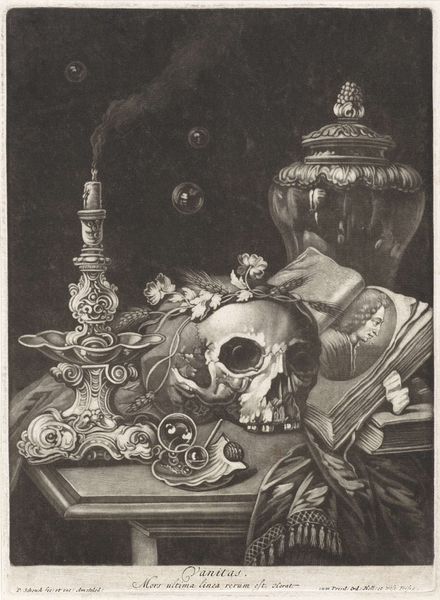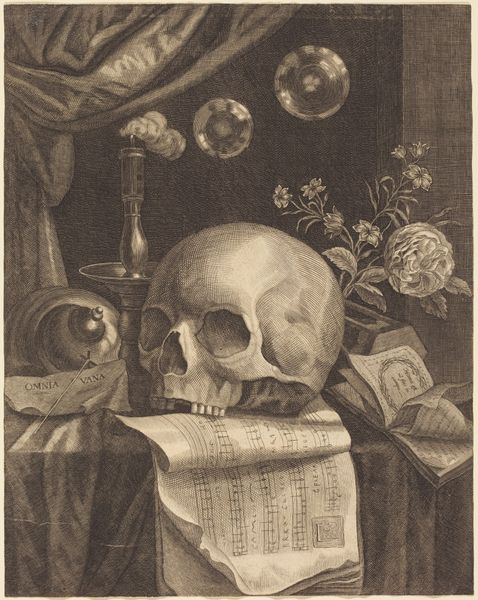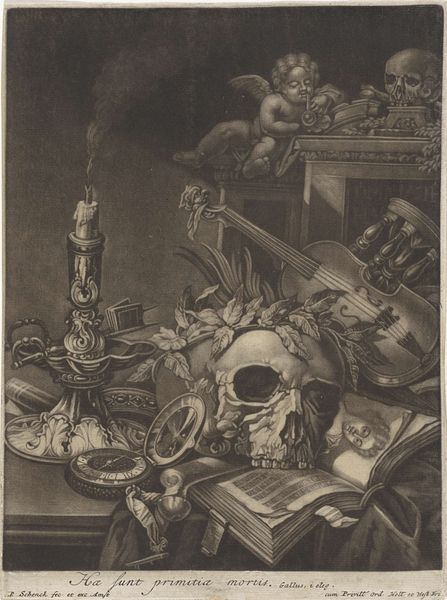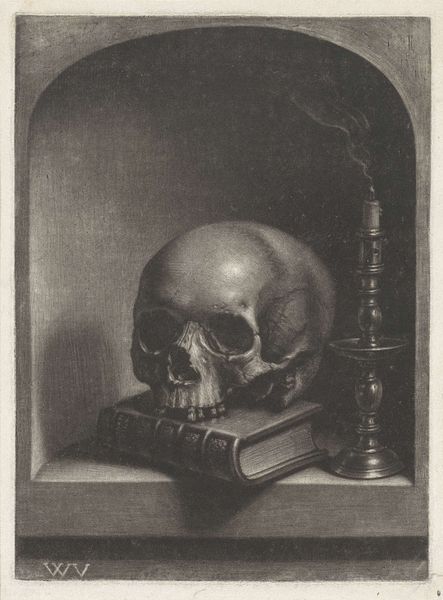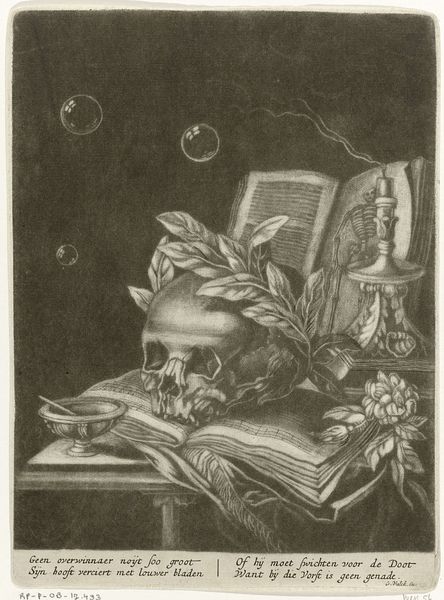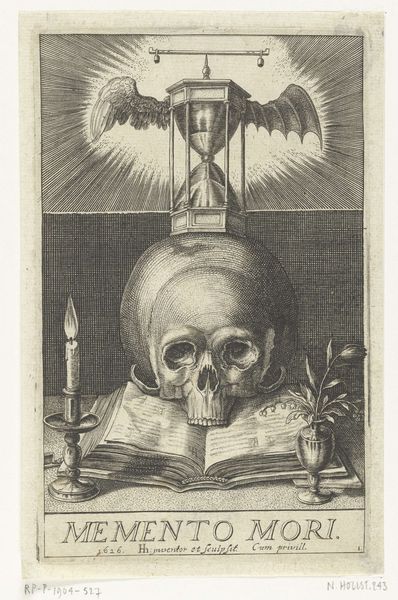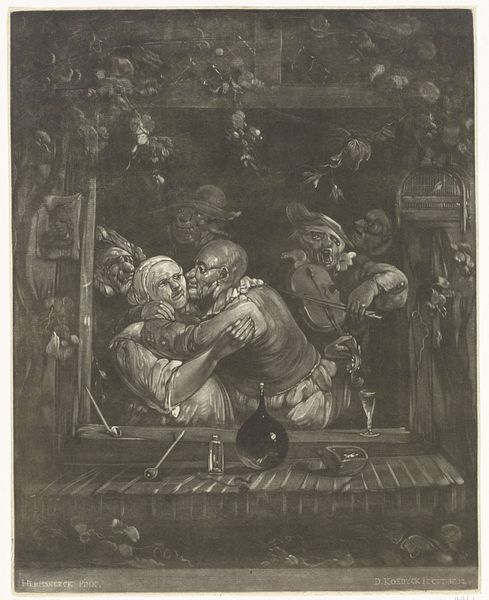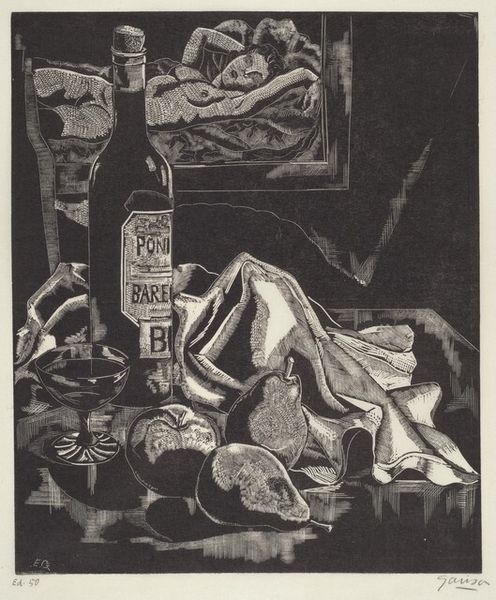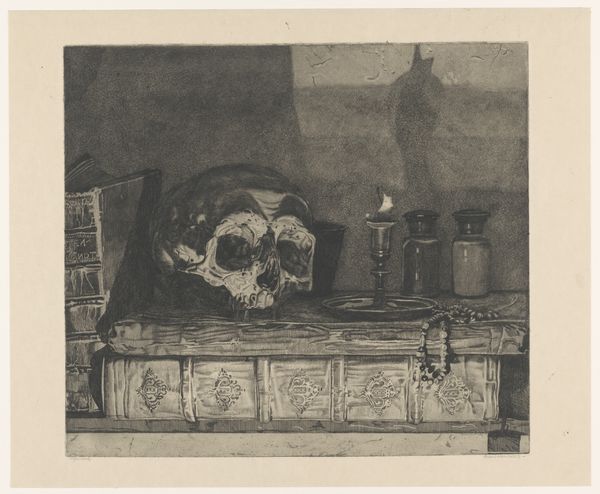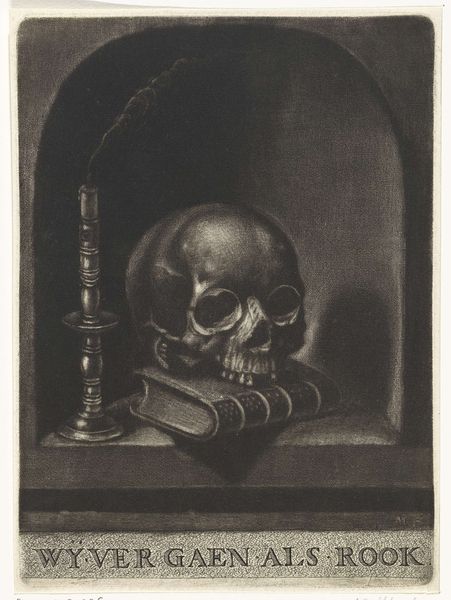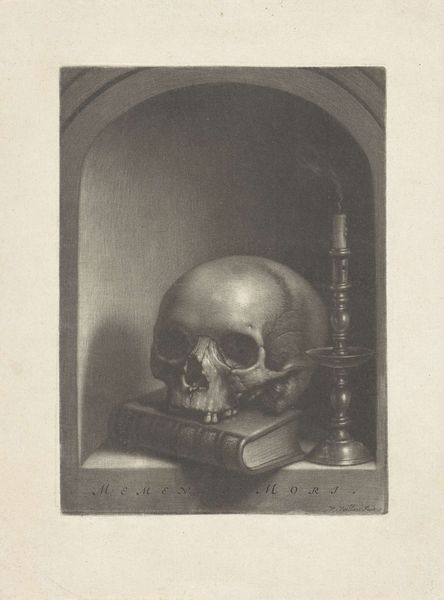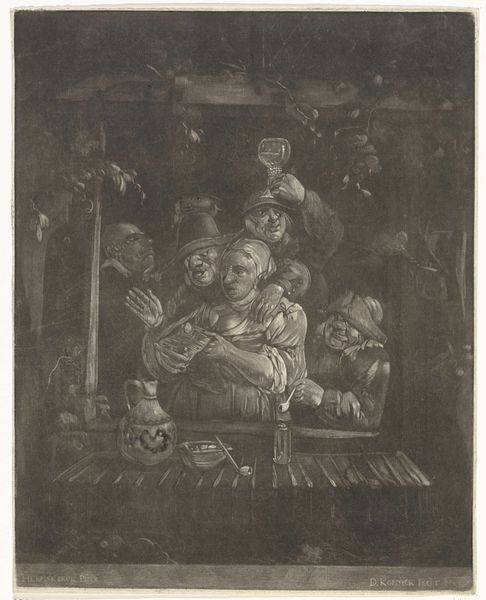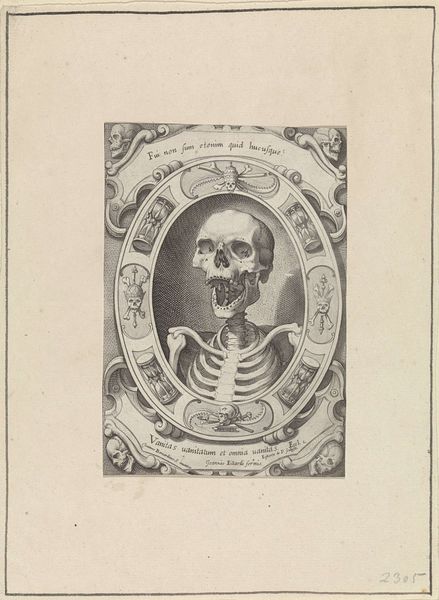
print, engraving
#
baroque
# print
#
old engraving style
#
vanitas
#
19th century
#
engraving
Dimensions: height 243 mm, width 178 mm
Copyright: Rijks Museum: Open Domain
Curator: Pieter Schenk created this engraving, titled “Vanitasstilleven met een bloembekranste schedel,” sometime between 1670 and 1713. It’s currently held in the Rijksmuseum. What strikes you about it? Editor: A peculiar stillness, isn't it? Like a memory half-faded. The skull, even crowned with flowers, brings such quiet contemplation of mortality. Curator: Indeed. Schenk’s piece participates in the vanitas tradition, which was incredibly popular in the Baroque period. These images serve as reminders of the transience of life. Editor: Those soap bubbles floating above really hit that home. Here one minute, gone the next, reflecting all the world and then... pop! Even the ornate candlestick can't hold back time, right? It’s kind of melancholic, don’t you think? Curator: Absolutely, that’s central to the genre! Notice how even the books signify intellectual pursuits are ultimately futile in the face of death? The whole scene is meticulously arranged to convey that message. The placement of each object is laden with symbolic meaning. Editor: The artistry itself feels like a tender contradiction, doesn’t it? So much skill lavished on depicting the fading of everything beautiful. There’s even a sort of peacefulness there. Does acknowledging impermanence maybe soften its sting? Curator: Perhaps. These vanitas images also carry a subtle moral undertone—encouraging the viewer to focus on spiritual, eternal values, rather than earthly possessions. It's less about gloom, and more about redirecting priorities, maybe? Editor: Ah, so it's a pep talk disguised as a still life? Like, "Hey, remember you’re gonna die. So maybe skip that extra dessert!" Curator: (Laughs) In a way! Pieter Schenk encourages a shift in perspective, from the fleeting to the eternal, all captured in this exquisitely detailed engraving. Editor: Well, I see this piece now with renewed appreciation for what each fleeting moment holds—as I reflect on what it means to observe an image created 300 years ago contemplating similar concerns about its time.
Comments
No comments
Be the first to comment and join the conversation on the ultimate creative platform.

